We may earn money or products from the companies mentioned in this post. This means if you click on the link and purchase the item, I will receive a small commission at no extra cost to you … you’re just helping re-supply our family’s travel fund.
Imagine retiring comfortably on $1,200 monthly – impossible in most U.S. cities where average retirees spend nearly $5,000, but reality across Europe’s most welcoming destinations. While Americans struggle to stretch Social Security checks averaging $1,907, expats in Portugal, Greece, and Albania live in historic cities with world-class healthcare for less than most U.S. car payments. Nearly 40% of American retirees now choose Europe, drawn by retirement visas requiring minimal income proof and tax breaks saving thousands annually. Here are the 12 European cities attracting American retirees on a budget.
Saranda, Albania
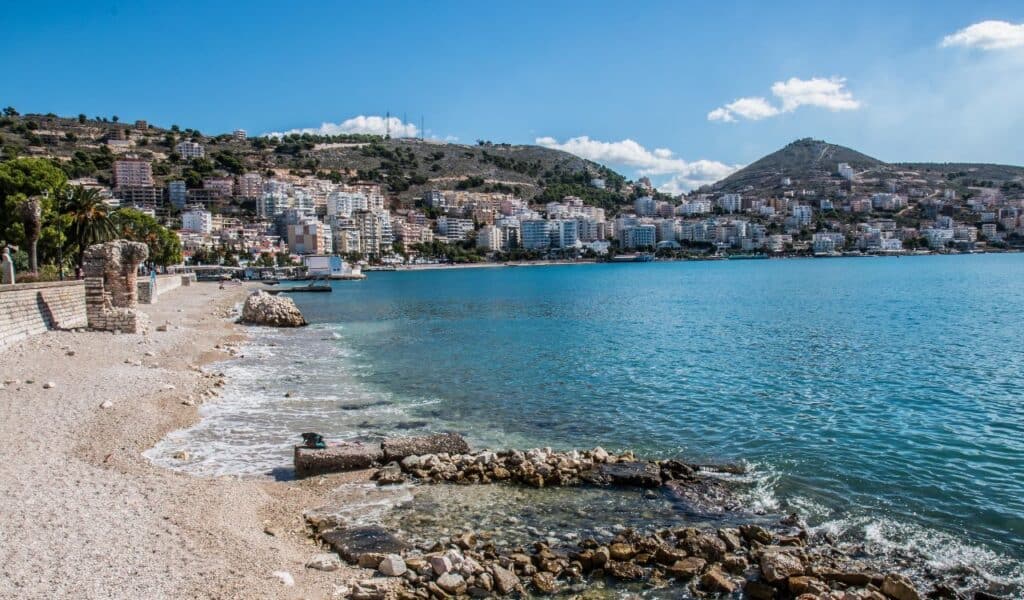
€1,050-€1,700 monthly – Albania’s emerging Riviera represents Europe’s final frontier for budget-conscious retirees, offering Ionian coastline views and proximity to Corfu via 15-minute ferry rides at prices unthinkable elsewhere in Mediterranean Europe. The Retirement Residence Permit requires minimal €10,000-€15,000 annual income proof with no wealth or inheritance taxes, Albania’s strategy for attracting foreign capital before word spreads. Butrint National Park’s ancient Greek and Roman ruins sit 20 kilometers south, while dramatic mountain backdrops rise immediately behind coastal roads creating spectacular scenery. Infrastructure improvements have accelerated since Albania’s 2014 EU candidacy, with new marina developments, international restaurants, and improved healthcare facilities appearing steadily, making Saranda the continent’s last undiscovered Mediterranean gem.
Chania, Crete, Greece
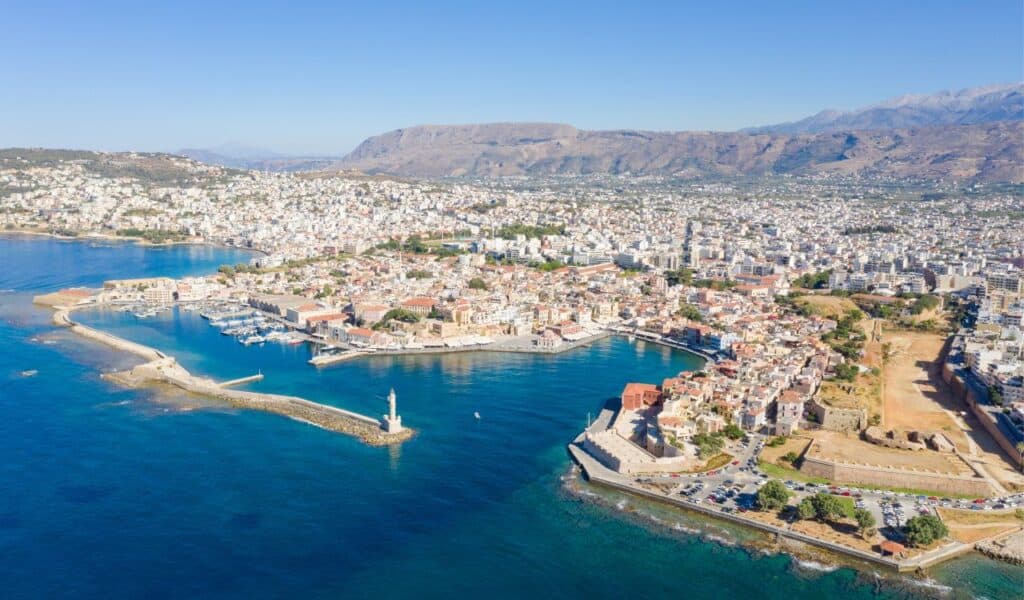
€809-€1,200 monthly – Crete’s Venetian harbor town offers something rare in modern Europe: genuine authenticity at genuinely low prices, comparable to what many Americans pay for utilities alone. Chania’s old town maze reveals Turkish mosques alongside Orthodox churches, evidence of the island’s complex history, while nearby Balos Beach consistently ranks among Europe’s most beautiful. The real draw for American retirees is Greece’s extraordinary 7% flat tax on foreign pension income for 10 years, potentially saving tens of thousands annually compared to U.S. taxation. Local tavernas serve wine from family vineyards at €3 per liter, olive oil costs less than bottled water, and the Mediterranean diet isn’t a trend here – it’s simply how Cretans have eaten for millennia, explaining why this island delivers Europe’s best tax break for pension income.
Ljubljana, Slovenia
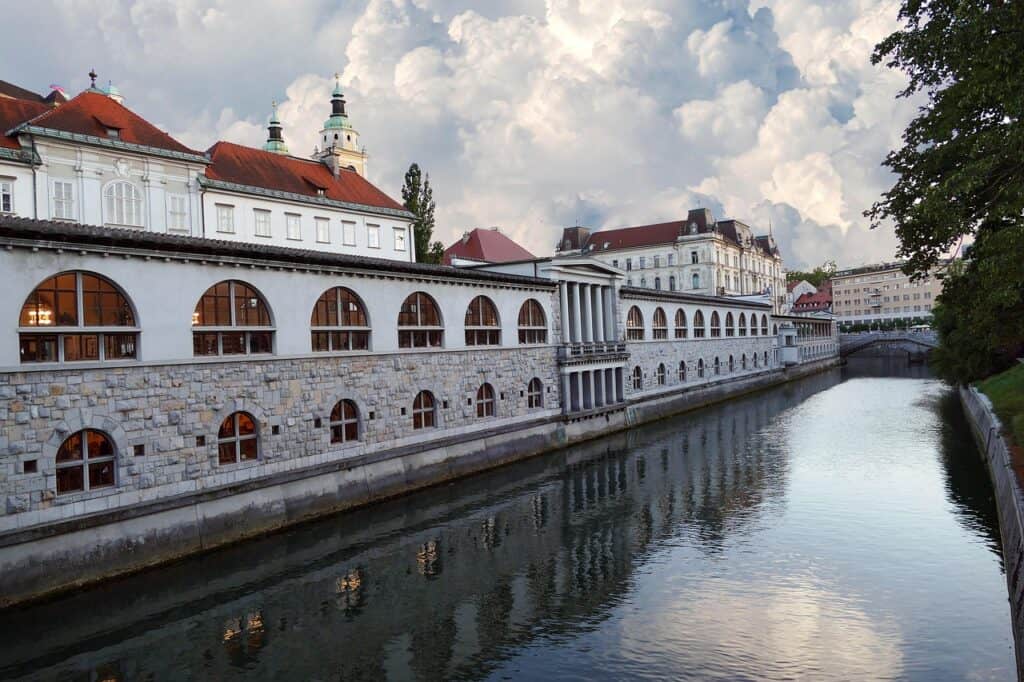
€900-€1,500 monthly – Slovenia’s charming capital remains Europe’s best-kept secret, offering monthly costs comparable to a week in U.S. assisted living in a car-free old town where Ljubljana Castle overlooks the Ljubljanica River and baroque buildings house contemporary cafés. The city earned “European Green Capital” designation for revolutionary sustainability policies, including extensive recycling programs and pedestrian zones throughout the historic center. Lake Bled’s alpine beauty sits just 45 minutes north, while the Adriatic coast lies an hour south, giving retirees extraordinary geographic variety. The Financially Independent TRP requires only €620 monthly income, Europe’s most accessible threshold, with 0% inheritance tax for close family making wealth transfer seamless. English proficiency here exceeds many Western European nations despite Slovenia’s population of just 2 million.
Riga, Latvia
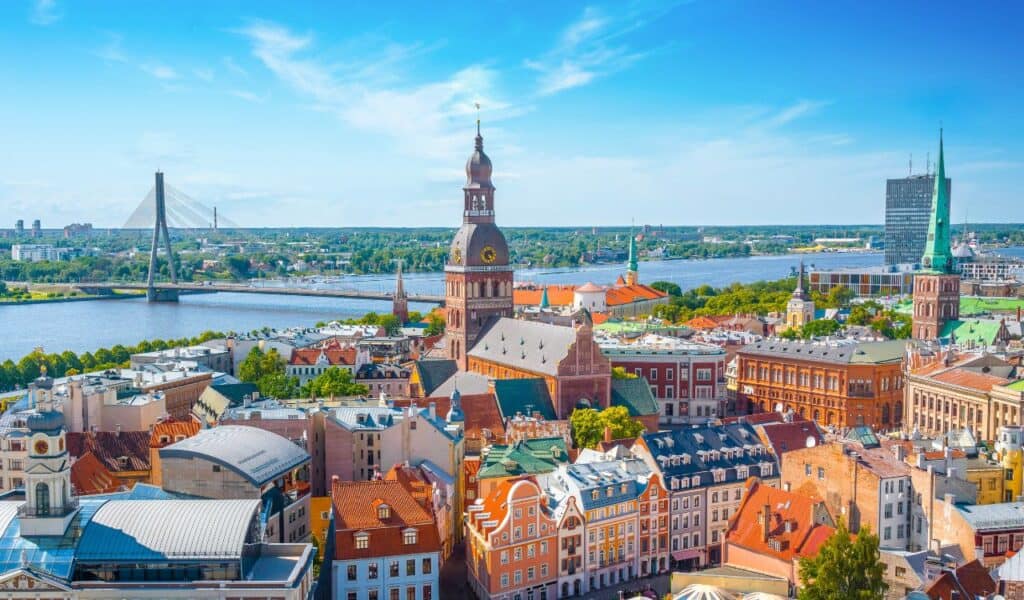
€1,200-€1,500 monthly – Latvia’s capital showcases over 800 Art Nouveau buildings – Europe’s highest concentration – creating streetscapes of ornate facades where mythological figures gaze from doorways and windows curve in impossible shapes, all at costs 30-40% below Western Europe. Monthly expenses make Riga remarkably affordable for an EU capital with full Schengen Area access and euro currency stability. The medieval Old Town’s cobblestone streets lead to the Central Market, housed in repurposed WWI Zeppelin hangars where vendors sell Baltic herring, smoked fish, and fresh dill by the armload. The TRP visa requires €1,500 monthly income with fast processing and no wealth tax, while nearby Jūrmala resort town offers sandy beaches stretching 30 kilometers along the Baltic Sea, positioning Riga as the EU’s best-kept affordable secret.
Algarve Region, Portugal

€1,200-€1,800 monthly – Portugal’s southern coastline has become the gold standard for American retirees seeking Mediterranean living without the Mediterranean price tag, hosting Europe’s largest American expat community. With over 300 days of sunshine annually, the Algarve delivers what many consider Europe’s best value proposition. The region stretches from historic Lagos to charming Tavira, offering pristine beaches, world-class golf courses at half the U.S. cost, and bustling expat communities where English flows as freely as Portuguese wine. The D7 Visa requires just €870 monthly income, the lowest threshold in Western Europe, while Portugal’s healthcare system ranks among the continent’s finest. Fresh seafood costs what frozen fish runs stateside, making the Algarve the easiest European retirement to achieve.
Valencia, Spain

€1,200-€1,500 monthly – Spain’s third-largest city remains refreshingly undiscovered by mass tourism despite offering 320 sunny days, Mediterranean beaches, and the futuristic City of Arts and Sciences, all for less than most Florida property tax bills. Monthly living costs make Valencia significantly cheaper than Barcelona or Madrid, while the local obsession with paella means authentic meals cost a fraction of tourist-trap prices. The city’s extensive cycling infrastructure spans over 150 kilometers, making car ownership optional, and the Non-Lucrative Visa grants access to Spain’s universal healthcare system ranked among Europe’s best. Valencia’s perfect blend of cosmopolitan culture and laid-back coastal living continues attracting growing numbers of American retirees seeking authentic Spanish lifestyle while visa requirements remain this accessible.
Málaga, Spain

€1,200-€1,500 monthly – Picasso’s birthplace has transformed from a sleepy Andalusian port into the Costa del Sol’s cultural capital while maintaining remarkable affordability at what Americans pay for basic cable and internet combined. The city boasts over 30 museums, Moorish fortresses like the Alcazaba overlooking the Mediterranean, and year-round beach access with average winter temperatures around 17°C. What sets Málaga apart is its authenticity – despite tourist influx, locals still fill tapas bars where meals for two rarely exceed €50, and the Sunday morning tradition of fried fish breakfasts remains unchanged. The airport connects directly to 140 destinations, making family visits seamless, while proximity to Morocco offers African adventures just 90 minutes by ferry, delivering culture and coast at half what comparable U.S. cities demand.
Lisbon, Portugal
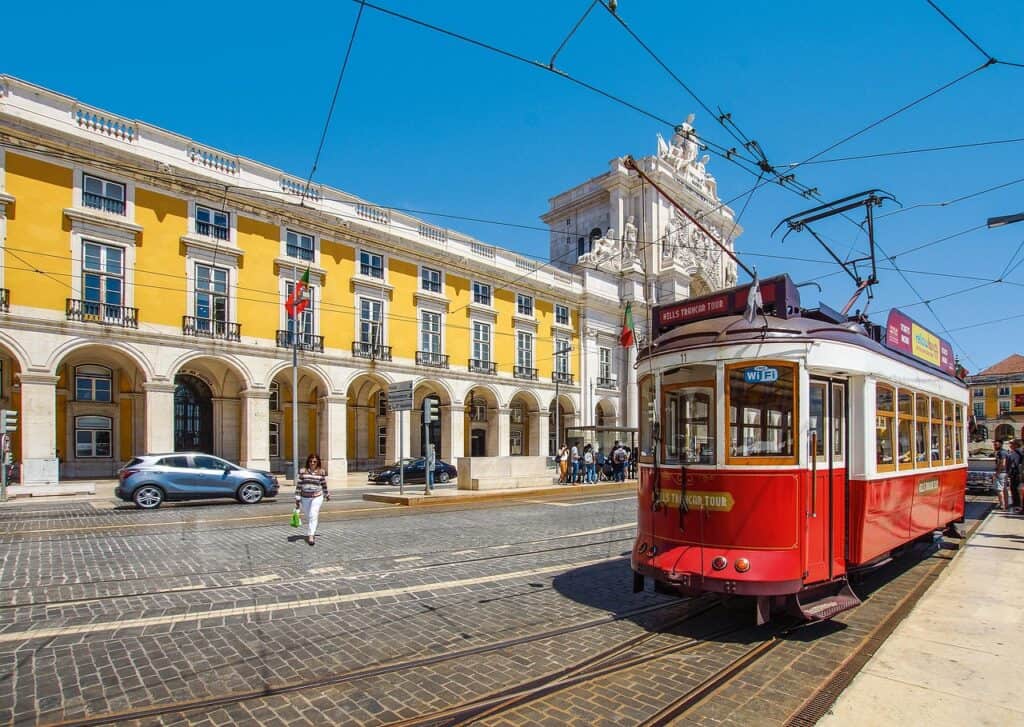
€1,200-€1,800 monthly – Portugal’s capital has mastered the art of blending historic preservation with modern livability, all at monthly costs that seem impossibly low for a Western European capital with this level of infrastructure. Lisbon’s famous yellow trams climb steep hills through neighborhoods like Alfama where fado music echoes from taverns unchanged since the 1920s, while the Belém district showcases Portugal’s Age of Discovery heritage. The D7 Visa’s €870 monthly requirement makes Lisbon accessible to modest pension incomes, with Portuguese citizenship possible after just five years of legal residency. The Atlantic moderates temperatures year-round, creating mild winters around 15°C while coastal beaches remain within metro reach, explaining why American residency applications here jumped 162% recently.
Lecce, Italy

€1,400-€1,600 monthly – Known as “The Florence of the South,” Lecce delivers baroque architecture rivaling Rome’s at monthly costs roughly half what northern Italian cities demand, making authentic Italian living accessible on moderate pensions. The city’s honey-colored limestone proved so soft that sculptors created impossibly intricate church facades dripping with cherubs, flowers, and saints, visible throughout the historic center. Puglia’s location between Adriatic and Ionian seas means fresh seafood dominates menus at prices Americans pay for fast food, ancient olive groves produce Italy’s finest oil, and nearby Alberobello’s UNESCO-listed trulli houses create fairy-tale landscapes. The Elective Residence Visa requires €31,000 annual income, granting access to Italy’s National Health Service, while Lecce’s position in the heel of Italy’s boot keeps mass tourism at bay despite extraordinary cultural richness.
Valletta, Malta

€1,500-€2,500 monthly – Europe’s smallest capital punches dramatically above its weight as the only English-speaking nation in Southern Europe, offering seamless integration in a UNESCO World Heritage baroque setting. Malta’s unique linguistic position stems from British colonial rule lasting until 1964, making American integration effortless without language barriers. The Malta Retirement Programme’s 15% flat tax on foreign income represents substantial savings, while 300+ annual sunshine days mean outdoor living year-round. Grand Harbor’s fortified walls once defended against Ottoman sieges and now frame yacht-filled waters, while Sicily sits just 90 kilometers north and North Africa 350 kilometers south, placing retirees at the Mediterranean’s crossroads with English as the official language throughout.
Paphos, Cyprus
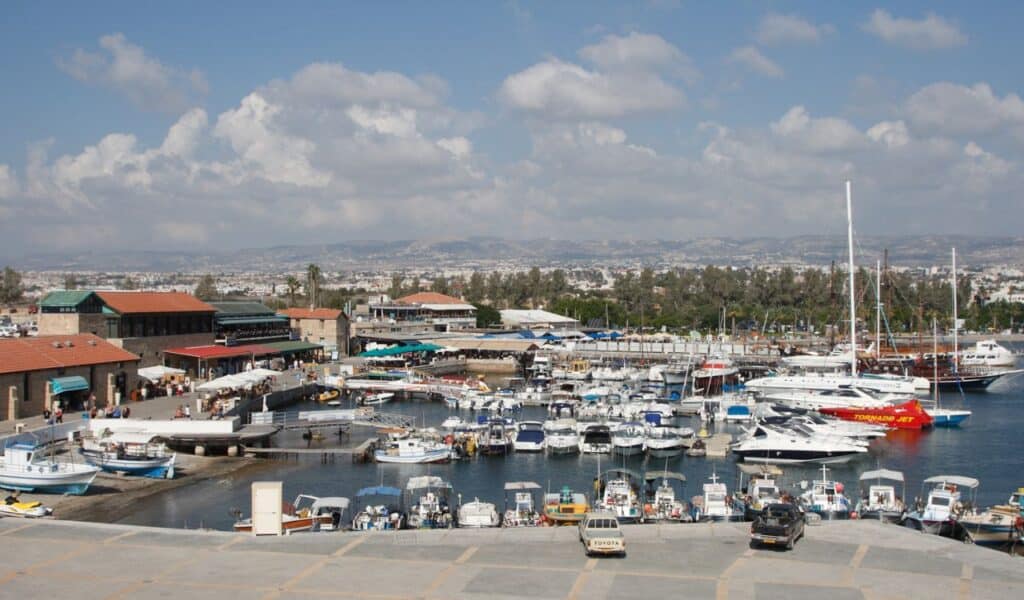
€1,800-€2,000 monthly – Cyprus’s southwestern coastal city delivers the Mediterranean’s most compelling tax proposition: 320+ days of sunshine, English as an official language, and favorable tax treatment for foreign pension income that European retirees have quietly exploited for decades. Paphos’s strong British expat presence stems from Cyprus’s colonial history, ensuring American retirees find familiar groceries, pub culture, and widespread English comprehension without translation apps. The city surrounds archaeological sites where Aphrodite supposedly emerged from the sea, while monthly costs include access to quality private healthcare and coastal properties at prices that would seem impossible in comparable U.S. locations. The Category F Visa requires minimal annual income proof around €9,600, making Cyprus’s year-round sunshine highly accessible.
Vienna, Austria
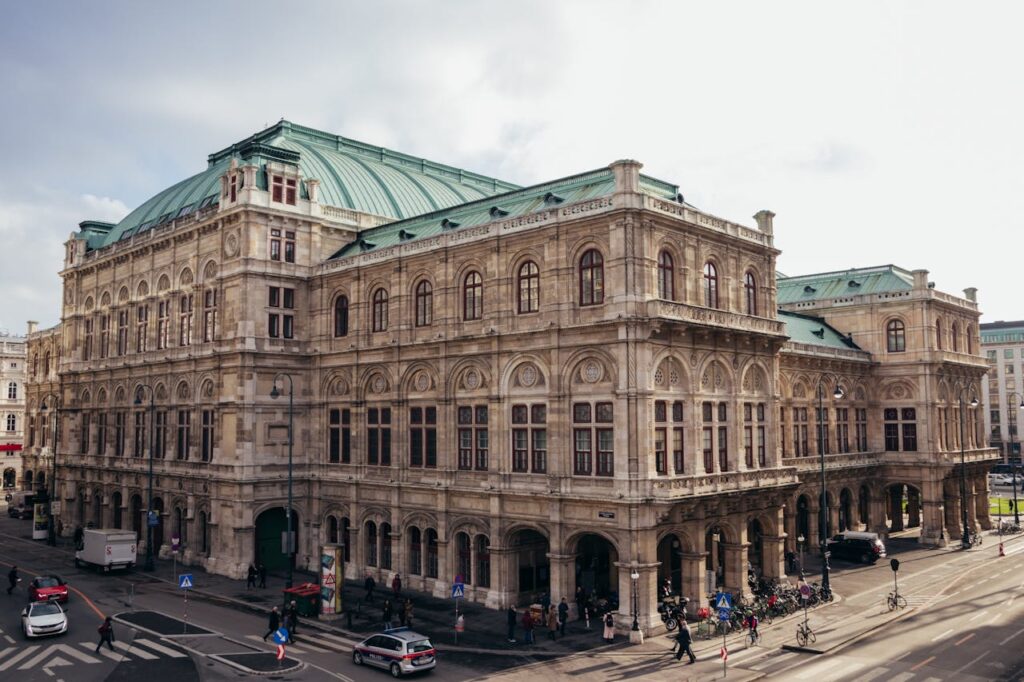
€1,900-€2,061 monthly – Vienna consistently tops global livability rankings for reasons American retirees seeking quality over bargain prices quickly discover: imperial architecture housing modern amenities, world-class opera at the Staatsoper with affordable ticket options, and public transportation so efficient that annual passes work out to roughly €38 monthly when paid upfront. Living costs exceed southern Europe but deliver exceptional value considering Austria’s universal healthcare ranked among the world’s finest and safety levels making Vienna Europe’s least crime-prone capital. The Settlement Permit requires €2,200 monthly passive income, targeting retirees who prioritize highest quality of life for under $2,500 monthly. Coffeehouses where Freud once pondered still serve Sachertorte and newspapers on wooden rods, maintaining traditions spanning centuries while alpine landscapes sit an hour away.
Other Blog Posts You Might Enjoy
www.idyllicpursuit.com (Article Sourced Website)
#European #Cities #Attracting #American #Retirees #Budget #Idyllic #Pursuit
